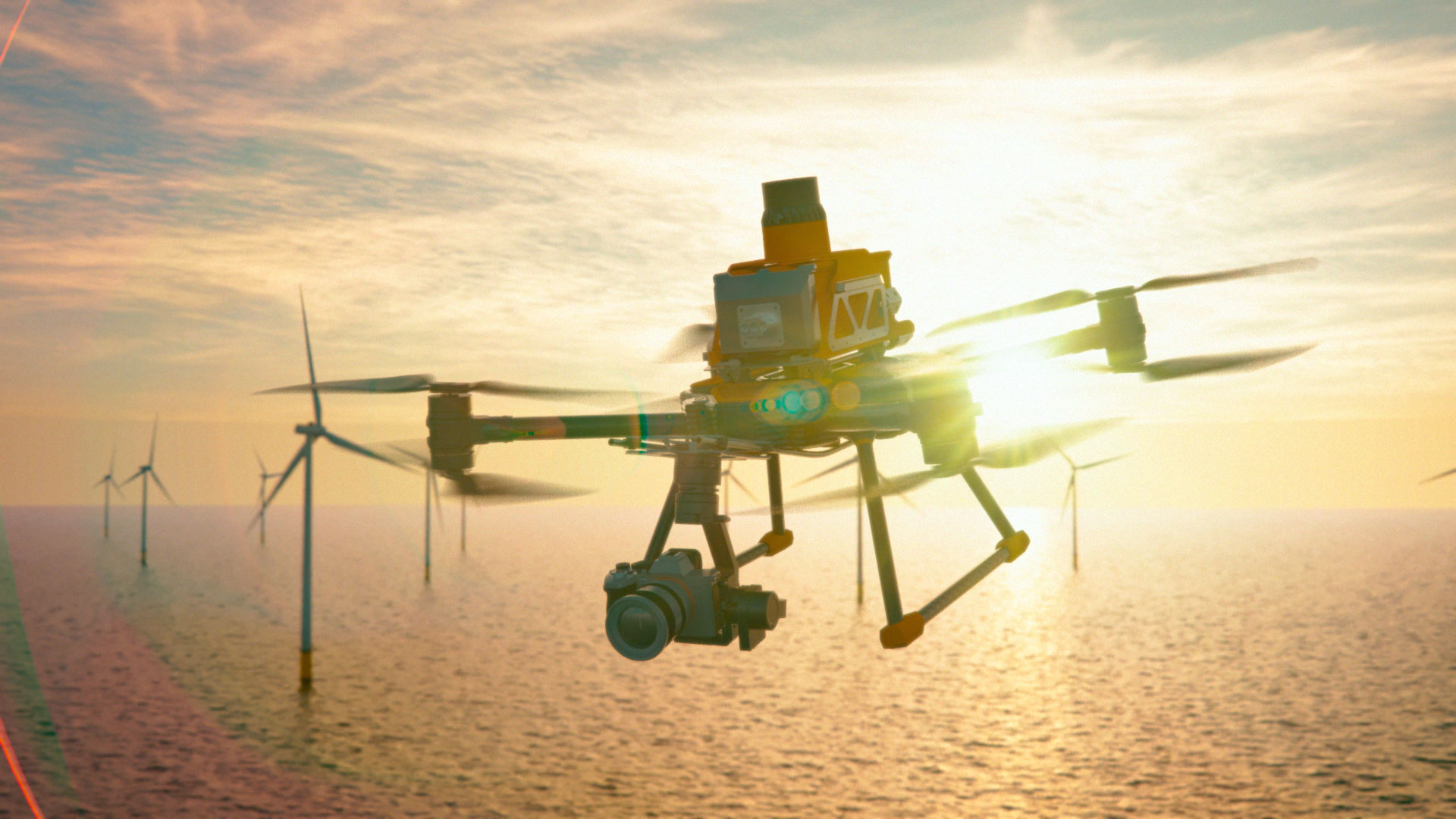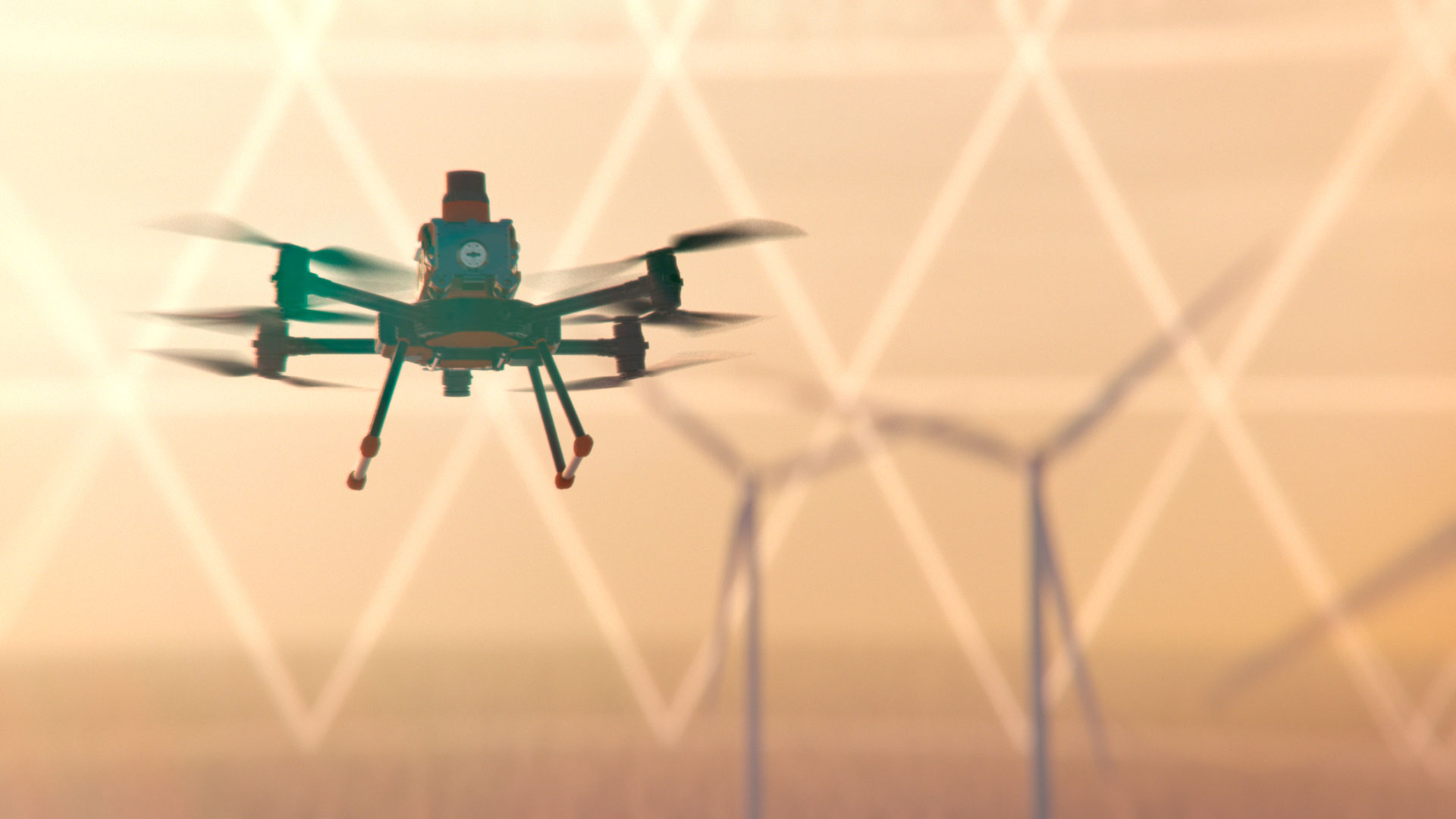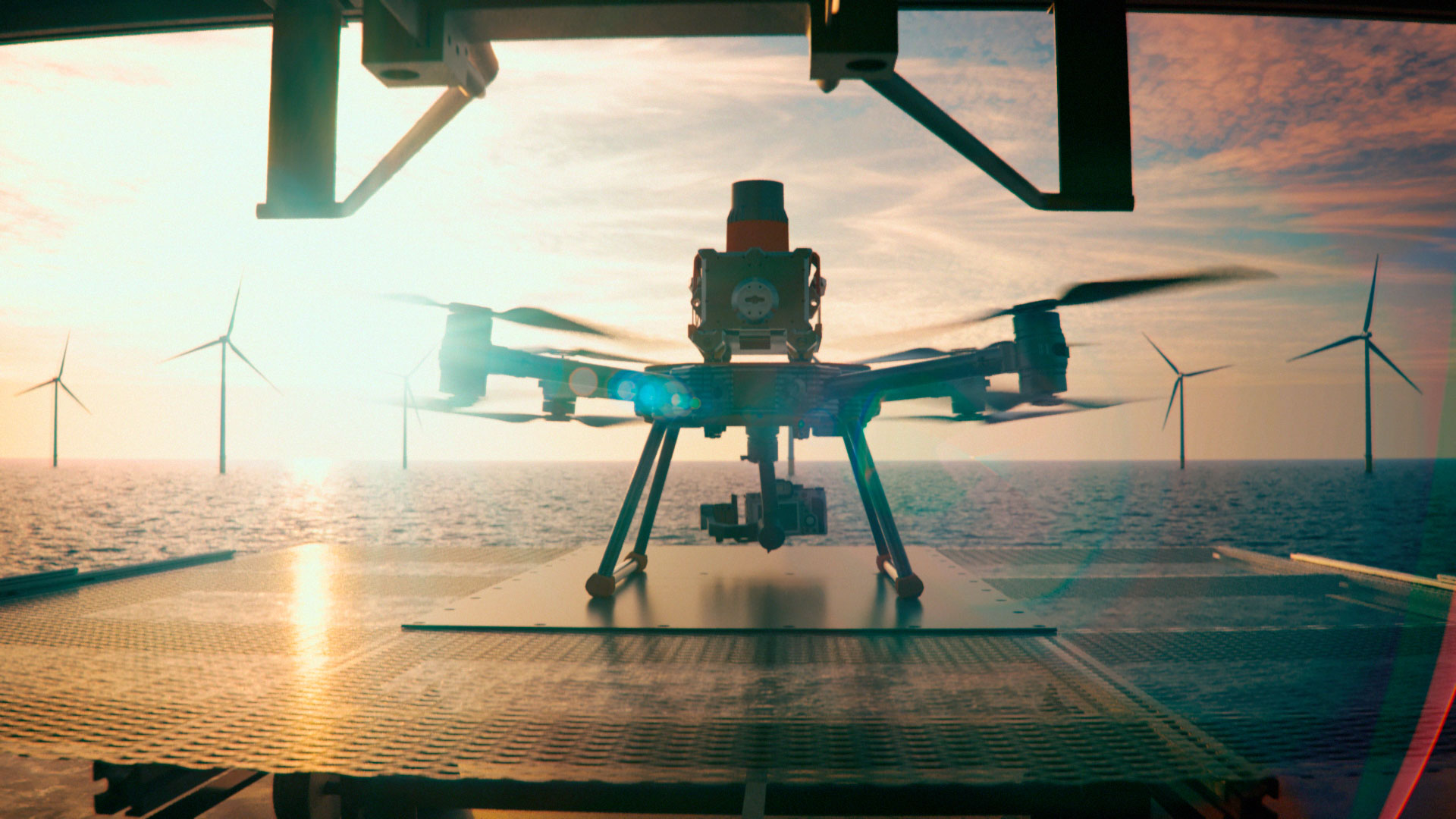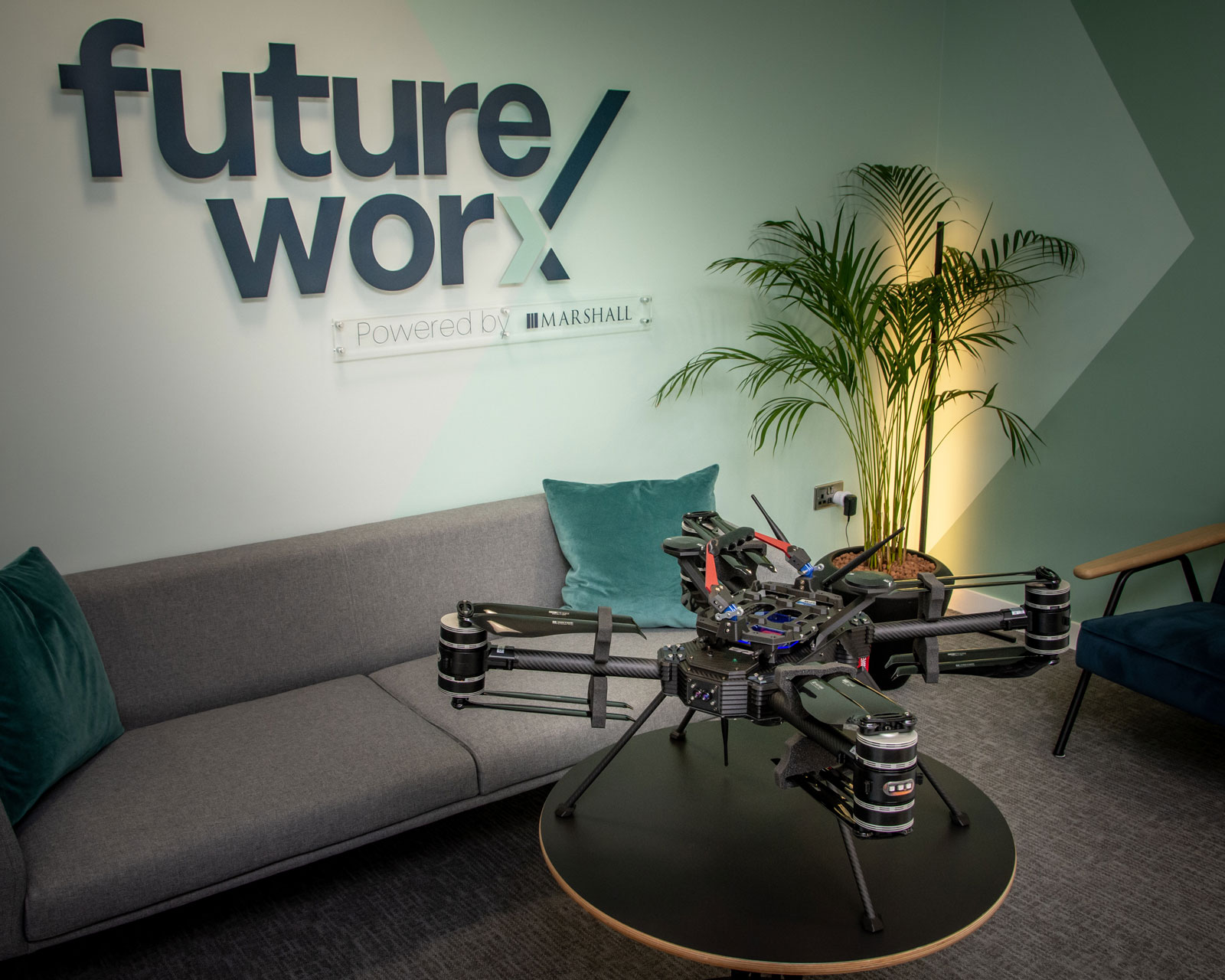
by Chris Hoe, Futureworx Architect

Futureworx Architect Chris Hoe is an active member of the Lilypad development team. Having curated the early concept, he supported business modelling with the wider team to understand economic viability. Following this, he worked with internal and external Stakeholders in creating the high level requirements for the overall system. Recently Chris balances broader project oversight with specific engineering tasks more closely aligned with his mechanical design background and historical experience.
Chris is an all-round mechanical design engineer with 20+ years of experience at a concept and detail design level, covering structural and fluid system parts, assemblies and installations. This has spanned a wide spectrum of applications, from broadly standalone new structures to modifications interfacing with ageing platforms.

The uncrewed aerial vehicle (UAV) industry is enjoying a prolonged expansion that is set to continue for the foreseeable future. In the UK, for example, a 2022 report from PWC predicted that drones will “save businesses an estimated £22bn a year by 2030 and contribute £45bn” to the national economy, including the creation of hundreds of thousands of jobs directly associated with drone adoption. Writ large, the scale and impact of UAV adoption will obviously be orders of magnitude larger across the global economy.
In the midst of this trend, Marshall Futureworx is launching its first product: Lilypad, an ecosystem of resident autonomous UAVs providing—in its first application—dynamic and on-demand offshore wind farm inspection.
This might seem like a risky undertaking at first glance. After all, the corporate registries are full of failed ventures that attempted and failed to capitalise on “the next big thing.” In order to avoid this fate, a venture must be founded on technical competence, achievable business outcomes, and pragmatic assessments of the regulatory state of play.
These were guiding principles for the Futureworx team when we were conceiving and developing Lilypad. Rather than targeting a complete step-change, we aimed to advance the familiar, envisioning Lilypad as a series of well-informed logical progressions from the status quo in terms of technological advancement, regulatory development, and application of existing in-house expertise.
In this article, I will run through each of these logical progressions and explain why our approach to Lilypad (while not short of ambition) is grounded in reality, rather than indulging in the hyperbole surrounding UAVs.

A technological progression
Rather than aiming to push the very limits of the possible, the Lilypad development team sought to combine and make use of the most advanced UAV technologies that can still be considered to have proven themselves.
For Lilypad’s first application in offshore wind turbine inspection, our aim was to offer a relatively recognisable but more potent and cost-compelling alternative to existing inspection solutions that use UAVs operating in visual line of sight (VLOS).
Such systems have become increasingly prevalent as UAV technology has become more reliable, resilient, and easy to acquire. In most cases, they involve manual operation by a person in a boat; in some instances, rudimentary automated passes are conducted to acquire photo data of turbine blades.
As we have covered in previous articles and therefore won’t re-explain in depth here, VLOS UAV inspections may offer improvements over rope access by human technicians, but they leave an enormous amount of room for improvement and fall short of fulfilling the potential of UAV technology.
To fill this gap, Futureworx (as systems integrator) partnered with two well-established UK-based technology leaders: UAV manufacturer ISS Aerospace and aerial intelligence specialist sees.ai.
The UAV used in Lilypad Offshore is a derivative of the ISS Sensus family. It can conduct inspections in harsh industrial environments (for example, winds of up to 20 knots), has a range of up to 15 kilometres and flight time of up to 50 minutes, and sports a high-resolution camera with LiDAR. Importantly, the Sensus platform has accrued substantial flying hours in the defence, security and energy sectors.
Meanwhile, the sees.ai navigation software powering Lilypad under the hood, can generate real-time environment 3D mapping, allows autonomous inspection of wind turbines regardless of blade angle and orientation, and can complete an inspection of all four aspects of all three blades within 15 minutes. Again, sees.ai are a trusted and reliable technology provider, having secured a number of UK-first permissions from the Civil Aviation Authority (CAA) to fly UAVs beyond visual line of site (BVLOS) in non-segregated airspace. This is a very high bar to pass.
Likewise, the technologies applied to Lilypad by Futureworx as system integrator are advanced but not unknown. A prime example of this would be our battery exchange mechanism, which eliminates the need for lengthy recharges and enables on-demand UAV availability: all the prerequisites for this kind of capability already existed, but the differentiator is lies in the rigour in which they have been applied and combined into a single package.
As I have hopefully explained above, Lilypad does not introduce any individual technologies that would previously have been unthinkable; rather, it integrates a range of the latest UAV technologies to have demonstrated their capability and reliability in real-world settings.
A regulatory progression
There are plenty of revolutionary ideas in the UAV space that may hold great potential for application over a decade from now, but regulatory approval is a matter of measured, evidence-based progress. Given the rapid global capacity ramp-up in the offshore wind industry, operators need solutions that can be ready to support the near term phase of unprecedented growth.
Our aim with Lilypad was never to achieve a stunning breakthrough that single-handedly upends the state of regulatory approval for uncrewed flight. Instead, given the current embryonic state of uncrewed aviation adoption, we consider that our system as a stepping stone in the safe and gradual transition from crewed aviation to a combination of crewed and uncrewed vehicles in unsegregated airspace.
By integrating technologies that are already known quantities, and by partnering with one of the few companies to have received a CAA-approved operational safety case for BVLOS UAV operation, we believe Lilypad offers an efficiency improvement at a rate of change that will be acceptable to all stakeholders.

A progression for the Marshall Group
Depending on your knowledge of the broader Marshall Group (Futureworx’ parent organisation) and its history, our entry into uncrewed aviation will either make perfect sense or seemingly very little. The reality is that, rather than being a “pivot,” Lilypad lies well within the group’s collective expertise.
Over more than a century, Marshall has built up a world-renowned ability to act as a prime integrator for complex systems. We are a CAA-authorised flight operator with decades of successful certification planning and quality approvals experience. Our Advanced Composites business has worked on high-profile UAV projects, including the BAE Systems HERTI UAV. Our Land Systems business has developed world-leading capabilities around developing ground control systems and related infrastructure. All of this organisational talent and knowhow is being brought together and channelled into Lilypad by Futureworx, as the innovation and venture building arm of Marshall.
Where key technology elements do not exist in-house, Futureworx, as the systems integrator for Lilypad, has chosen to partner with ISS and sees.ai as the UK’s best-in-class providers.
Looking to the future, uncrewed aviation can be seen as being a plausible revenue stream for many of Marshall’s businesses.
A progression to adjacent applications
So far in this article, I have focused primarily on the initial application of the Lilypad system: inspecting offshore turbine blades. This is an ideal first use case, but it is certainly not where the Lilypad’s utility stops. In fact, Lilypad is an inherently adaptable platform with multiple potential development paths branching out from it.
All other parameters being equal, it might make sense to start by exploiting opportunities that are immediately adjacent to our initial application. It would not, for example, be a significant departure to expand the existing Lilypad setup to perform visual inspections of offshore wind infrastructure in addition to turbine blades—for example, turbine transition pieces, jackets and nacelles, wind farms under construction, or power substations.
Moving away from offshore wind, a logical next step for Lilypad could be onshore infrastructure, such as wind farm inspection, nuclear facility monitoring, remote asset security, or solar farm inspections.
Lilypad UAVs can also be equipped with non-optical payloads, allowing for non-optical inspection and monitoring services - for example, those requiring bathymetry or gas detection.
Looking slightly further afield, the next category of adjacent applications for Lilypad spinoffs might involve sectors such as defence (a rapidly growing uncrewed aviation market), where Lilypad’s resident UAV ecosystem and BVLOS capabilities could prove invaluable in meeting requirements for heavy lift, ground support, or intelligence, surveillance and reconnaissance (ISR).
I should note that these examples reflect my own thoughts, are far from exhaustive, and should be considered malleable, influenced by Futureworx interaction with the market sector and the business relationships we organically develop over time.

Lilypad: uncrewed aviation for the coming decade
Hopefully this article has shown that “Logical Progression” is not only one of the greatest Drum and Bass records of all time, but is also the best descriptor of the Marshall Futureworx focus on uncrewed aviation.
Lilypad is a logical progression in terms of technological advancement, regulatory feasibility, application of Marshall’s in-house knowhow, and scope for further expansion beyond its initial application in offshore wind.
This pragmatic approach means that Lilypad will be in the market within months, rather than decades, and will therefore be perfectly placed to service the explosive growth of the UAV market.
More information on Lilypad will be available when the product is first publicly showcased during the Global Offshore Wind Exhibition in London on June 14th, 2023. If you’re visiting the show, please stop by and visit the Futureworx team on stand A66.
You can also learn more from the dedicated Lilypad webpage on our Futureworx website: https://marshallfutureworx.com/lilypad.